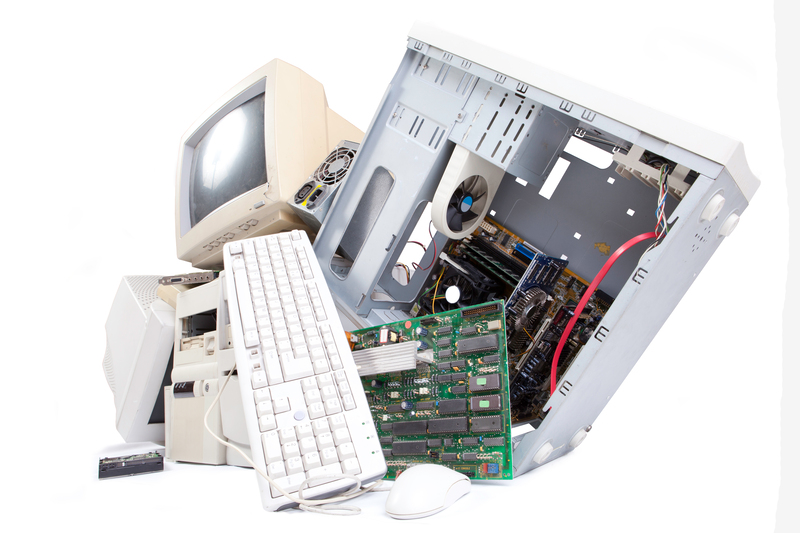Turning Old Pots and Pans into New Opportunities for Recycling
Is your kitchen cluttered with old pots and pans that have seen better days? Instead of tossing them into the trash, consider the creative and environmentally friendly possibilities of recycling cookware. This comprehensive guide explores how to give your worn-out cookware new life, why it matters, and how you can start turning old pots and pans into fresh opportunities--for yourself and the planet.
Why Recycle Old Pots and Pans?
The humble pot or pan might seem insignificant in the grand scheme of things, but when millions end up in landfills every year, their environmental impact grows. Recycling old cookware not only conserves valuable materials but also prevents the waste of resources and the emission of greenhouse gases. Here are a few reasons you should consider recycling your old kitchenware:
- Reduces landfill waste: Metal and nonstick cookware can take decades, if not centuries, to decompose.
- Recovers valuable materials: Aluminum, stainless steel, and copper are in high demand for manufacturing.
- Upcycles items for new purposes: You can get creative and give your pans a second life--outside the kitchen!
- Promotes eco-conscious living: Every small change contributes to a more sustainable planet.

Understanding What Your Old Pots and Pans are Made Of
Before embarking on your recycling journey, it's crucial to understand the material composition of your cookware. Most old pots and pans fall into one of these categories:
- Stainless Steel: Durable, resistant to rust, and 100% recyclable.
- Aluminum: Lightweight and highly recyclable; found in many 'budget-friendly' cookware sets.
- Copper: Often used for its excellent conductivity; valuable for scrap metal recycling.
- Cast Iron: Heavy and rugged; can rust over time but is highly sought after for restoration or scrap.
- Nonstick-Coated Pans: Trickier to recycle due to the synthetic Teflon or ceramic coatings.
Identifying your cookware's materials is essential because some types are easier--and more valuable--to recycle than others. If you're uncertain, check for any manufacturer's markings on the bottom or consult online resources.
How to Prepare Old Pots and Pans for Recycling
Proper preparation ensures your used cookware has the best chance for a sustainable afterlife. Here's what you should do:
- Clean Thoroughly: Remove food residue and grease. Many metal recyclers require items to be free from contaminants.
- Disassemble if Possible: Remove plastic handles, lids, or non-metal attachments. Mixed materials may complicate recycling.
- Check Nonstick Surfaces: Some facilities accept nonstick cookware, but others do not. Remove or sand off coatings if instructed.
- Sort by Metal Type: Group stainless steel, aluminum, and copper separately for streamlined processing.
Where to Recycle Cookware: Local and National Options
Many people are surprised to learn that you can't just toss pots and pans into your curbside recycling bin. However, there are a variety of local and nationwide options:
1. Metal Scrap Yards
- Almost all pots and pans--except those with non-removable nonstick or plastic coatings--are welcome at metal recycling centers.
- Contact local scrap yards and ask about their requirements. Some may even pay for copper or stainless steel!
2. Dedicated Recycling Events
- Cities and towns frequently organize recycling days for household goods including old kitchenware.
- Check your municipality's website or call your local waste department.
3. Manufacturer Take-Back Programs
- Some cookware brands, such as Calphalon, offer mail-in recycling for their products.
- Look up your brand's website or contact their customer service directly.
4. Donation and Reuse Centers
- Charities, thrift shops, or shelters may accept lightly used pots and pans.
- Even scratched or battered pieces might be valuable to artists or hobbyists.
Creative Ways to Upcycle Old Pots and Pans
Not every pan is destined for industrial recycling. With a little imagination, you can transform old cookware into functional or decorative pieces for your home and garden. Here are a few ideas:
DIY Planters
- Pots and pans make quirky, durable planters for flowers, herbs, or succulents.
- Drill drainage holes in the bottom and paint the outside for extra flair.
Bird Baths and Feeders
- Turn old frying pans or saucepans into unique bird baths or feeders.
- Mount them on poles or hang them from trees for a rustic look.
Wall Art and Home Decor
- Lid collections make chic wall hangings; polished copper pans become statement art pieces.
- Use a set of old mismatched pans to create a retro, industrial kitchen display.
Organizers and Storage
- Turn a saucepan into a pencil holder, a cake pan into a tool tray, or a bundt pan into a jewelry display.
- Label and paint them for better aesthetics and organization.
Upcycled Clocks or Chalkboards
- Convert pan lids into clocks with a simple mechanism kit.
- Paint the inside of a pan with chalkboard paint for a unique memo board.
The Environmental Benefits of Recycling Old Cookware
When you choose to recycle or upcycle your worn-out pots and pans, the positive environmental impacts are significant.
- Conserves natural resources: Recycling metals uses less energy and raw materials than mining new ore.
- Reduces greenhouse gas emissions: Manufacturing from recycled metal emits far less carbon dioxide.
- Decreases landfill burden: Heavy metal items take substantial space and time to decompose.
- Inspires community involvement: Visible upcycling projects encourage others to adopt green habits.
By recycling old kitchenware, you contribute to a circular economy and a cleaner planet. Every piece counts!
Frequently Asked Questions About Recycling Pots and Pans
Can Nonstick Pans be Recycled?
The answer is yes, but with caveats. Nonstick coatings like Teflon complicate the process:
- Some scrap yards will accept them if the coating is removed first.
- Check with your local recycling center for specific policies.
- If traditional recycling is not an option, consider upcycling ideas or contacting the manufacturer.
Can You Donate Damaged Cookware?
If the cookware is cracked or hazardous to use for food, donate it only for artistic or organizational uses. Otherwise, recycle or upcycle instead of giving it to a charity shop that might have to discard it.
What About Plastic or Glass Lids?
Recycling options for lids depend on the material:
- Plastic lids: Check the recycling symbol and your local curbside program's policies.
- Glass lids: Most glass recycling programs will accept them, but tempered glass can be problematic.
Do You Need to Remove Handles?
Yes, if the handles are wood or plastic, as they cannot be recycled with metal. Detach them whenever possible to streamline the process.
Global Trends in Cookware Recycling
Across the globe, recycling initiatives for old cookware are gaining momentum. Innovative companies and municipalities are launching programs that make it easier--and sometimes lucrative--for consumers to recycle:
- Extended Producer Responsibility (EPR): Some regions require manufacturers to take back used products, including cookware.
- Recycling Partnerships: Collaborations between retailers and recyclers have introduced convenient drop-off programs.
- Incentives for Upcycling: Competitions and grants reward inventive repurposing of kitchen items.
- Online Marketplaces: Platforms like Etsy and eBay are full of creative upcycled cookware, inspiring even more reuse.
Tips for Extending the Life of Your Cookware
An ounce of prevention is worth a pound of recycling. Here's how you can keep your pots and pans in service for longer:
- Hand wash when possible to prevent warping or loss of nonstick surfaces.
- Avoid metal utensils that can scratch and damage cookware finishes.
- Use cookware for intended purposes (don't deep-fry in saucepans or bake in frying pans unless specified).
- Season cast iron to prevent rust and prolong usability.
- Properly store and avoid stacking if the finish is fragile.
The longer your cookware lasts, the less frequently you'll need to consider recycling or replacing it.

Conclusion: Transform Your Old Pots and Pans Into Opportunity
With a shift in perspective and a little know-how, turning old pots and pans into new recycling opportunities becomes an enriching practice. Whether you take them to a recycling center, experiment with creative upcycling, or donate them to someone in need, your efforts matter. Not only are you minimizing waste, but you are also inspiring others to think twice before sending old kitchenware to the landfill.
Remember: Every pot and pan has the potential for a second life. Start your recycling journey today and be a part of the solution for a cleaner, greener future!
Related Resources and Further Reading
- US EPA - How Do I Recycle?
- Earth911 - Find Recycling Centers
- Good Housekeeping - Ways to Reuse Old Cookware
- Recycle More - Kitchenware Recycling Guide
Ready to revolutionize your recycling habits? Share your upcycling ideas or favorite recycling resources in the comments below!